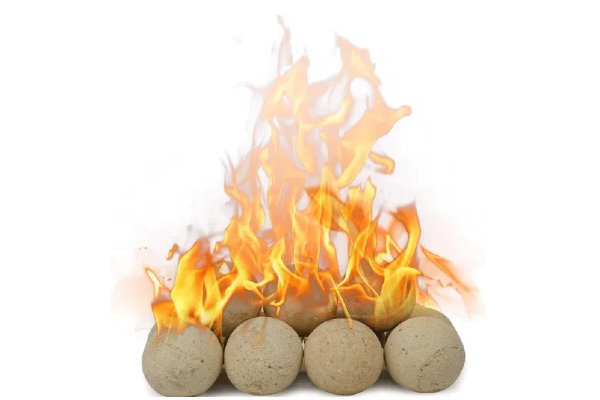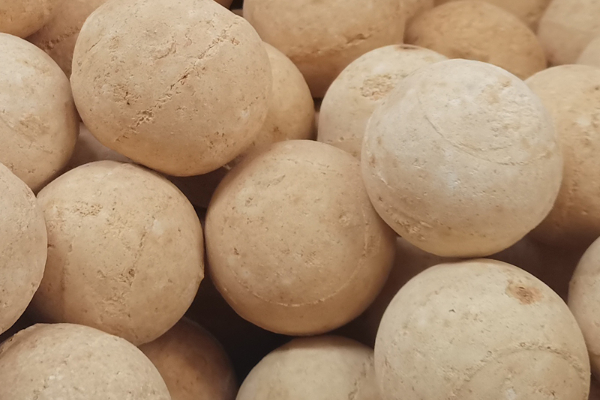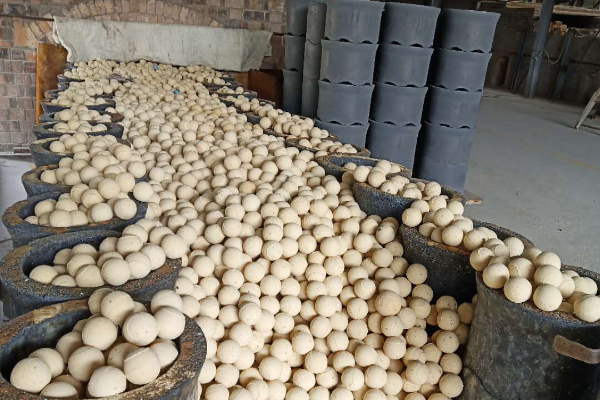High temperature fire ball production process
In high-temperature industrial fields such as petrochemicals, fertilizers, metallurgy, and electricity, High temperature fire ball is a commonly used furnace filler or support material with excellent high-temperature performance, ўстойлівасць да тэрмічнага ўдару, and chemical stability. In order to ensure its stable performance under extreme working conditions, the production process of refractory balls must be strictly controlled, from raw material ratio to firing temperature, every step is crucial.

Introduction to the production process of high-temperature fire ball
The process of machine pressure molding is essentially a process of making the particles in the ball material dense and causing the air to form a dense sphere. The refractory balls formed by machine pressure molding have the advantages of high density, высокая трываласць, small drying shrinkage and firing shrinkage, and easy control of the size of the refractory balls. Таму, this method occupies a major position in the production of refractory balls. In order to obtain a dense sphere during machine pressure molding, sufficient pressure must be applied to the ball material. The size of this pressure should be able to overcome the internal friction between the ball material particles, overcome the external friction between the ball material particles and the mold wall, and overcome the uneven pressure distribution caused by the uneven filling of the ball material, moisture, particles, and the mold.

The proportional relationship between these three depends on the dispersion of the ball material, the particle composition, the moisture content of the ball material, the size and shape of the ball, г.д. Although there are several theoretical formulas for calculating the relationship between pressure and ball densification, such as the pores of the ball change logarithmically with pressure, г.д., the test method is usually used to approximately determine the unit area pressure required for the ball, and the total pressure of the brick press should be determined accordingly.
In addition to the requirement that the moisture content of the ball material should have a certain fluctuation range, the machine pressure molding also has certain requirements for its particle size, such as a reasonable particle size ratio and as large a bulk density as possible. The general critical particle size is 3-5mm, and the fine powder content less than 0.088mm should be within the range of 35%-45%. The most common defects of the refractory balls formed by machine pressure molding are layer cracking and the layer density phenomenon. Layer cracking is a layered crack perpendicular to the pressure direction formed during the pressurization process. Too high moisture content of the ball material, excessive fine powder, too little binder, and too high pressure will lead to layer cracking.
Таму, these parameters must be controlled in production. The layer density phenomenon means that the density of the refractory ball after molding reverses along the pressure direction. The refractory ball pressurized from above is generally dense on the top and sparse on the bottom, and dense in the middle and sparse on the outside on the same horizontal plane. This is due to the pressure reduction caused by the friction between the ball particles and the friction between the ball material and the mold wall. The method of double-sided pressurization and applying lubricating oil on the four walls of the mold to reduce external friction can reduce this phenomenon and reduce the porosity of the ball.

The selection of molding equipment should be based on the quality requirements, size and production quantity of refractory balls. For general heating furnace refractory balls or products with simple shapes, large quantities, and general quality requirements, a lever ball press with higher production efficiency can be selected; for refractory balls with higher quality requirements, a friction ball press with a nominal pressure of not less than 2000K•N can be used.
 Фабрыка вогнеўпораў Rongsheng
Фабрыка вогнеўпораў Rongsheng
WeChat
Адсканіруйце QR-код з дапамогай wechat